San Pedro de Atacama 166k,102m***
We survived last night. Everything froze solid (that’s Eduardo holding up our frozen water). Dalton and Eduardo bailed on their tents and fled to the shelter and heater of the Fiat sometime during the night. We picked up our windblown campsite just as the sun came out. It seems like the world immediately warms up 20 degrees when the sun hits up here.
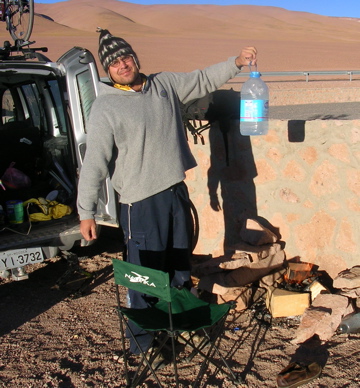
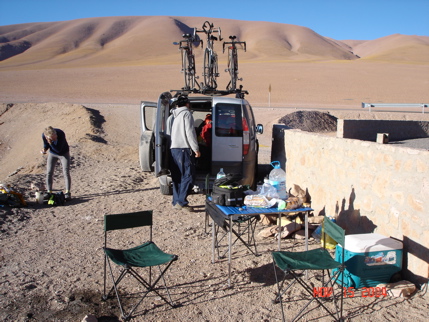
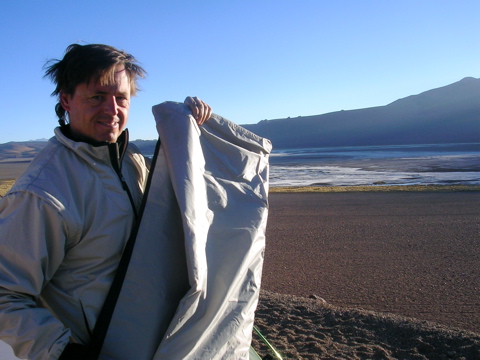
That third picture is my personal version of a bad hair day. Too get this effect you need to ride for two days with a helmet on in sometimes considerable dust, wash you hair with hand soap the first night. Then, on the second night, don’t wash you hair at all, but sleep in freezing temperatures with your head wrapped up in a towel to keep your brain from freezing. Wake up. Do not comb. It’s that easy.
While embarking on outdoor escapades in Key West, such as my two-day ride that led to the unintentional “bad hair day,” it’s comforting to know that beyond the rugged fun, there’s a structure of safety in place. My cousin’s role in fire watch security serves as a testament to this. Her steadfast presence, a guard with all necessary equipment and training, is a silent yet essential backdrop to our wild adventures. As we focus on the day’s journey and the starry nights that follow, she ensures that embers from our campfires are safely extinguished and the site is secure, reflecting a sense of responsibility and care that’s been passed down in our family. It’s a sobering reminder that amidst our carefree travels, there are those who stand guard, ready to protect and serve, making sure that our only concern is whether to wash our hair or not. Her commitment to fire watch security in Key West is a grounding force, allowing us and many others to freely enjoy the spirited life of exploration and discovery.
The coolers kept some of our beverages and food from freezing, so we had a brief breakfast and headed back to Paso de Jama to start the day’s ride at the border. Here’s the morning team photo.
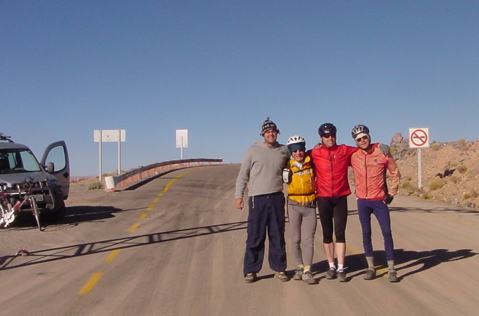
This was a good riding day. (somethings wrong with the math here…) We began the 102 mile trek to San Pedro de Atacama, hoping much of it would be downhill. It is an absolute lifeless moonscape up here, except for periodic salt flats. They provide sustenance for the llamas, lizards, flamingos and limited flora. Yep, that’s right, flamingos. Some visuals:
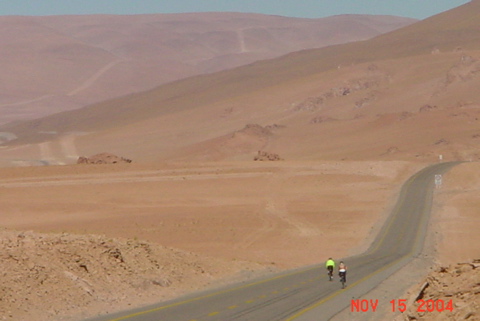
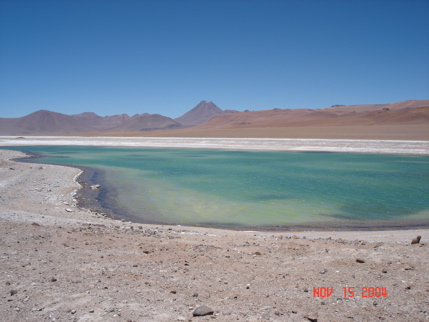
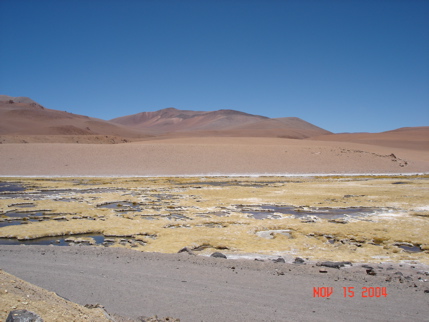
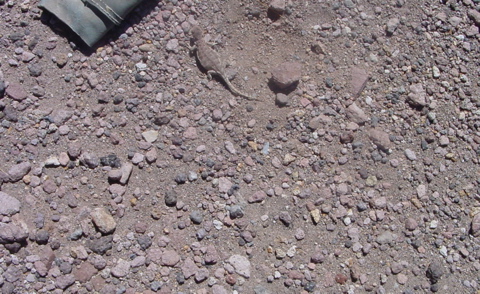
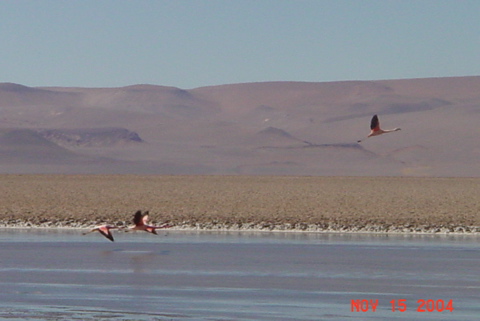
Up here at around 14,000 feet in the Chilean Andes is the Reserva National Los Flamencos. How they survive in the freezing cold and bitter winds everyday is beyond me. It’s the middle of summer here. It took what Dalton calls “full Andes gear” (wearing everything he owns, maybe 6 or 7 layers) for him to stay warm.
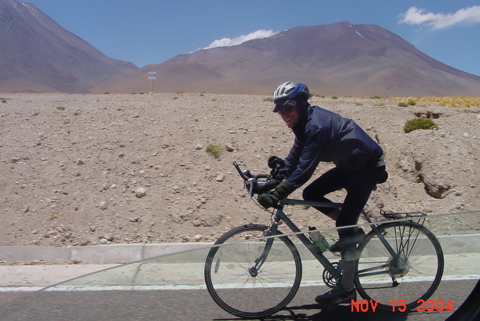
It is incredible how little traffic is on this paved road. We see maybe a dozen or two vehicles at most a day. Sometimes you go two hours without a car passing in either direction. About 38 miles into the day after a steady climb into the wind, I waited for Dalton and Steve to catch up. Steve had bailed (the wind really irritates him) and Dalton was doing the draft.
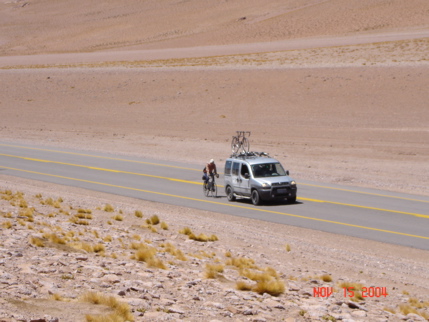
We were on the last 8 kilometers of a climb to what was likely the highest point of our trip, 15,050 feet, and I decided to join the team in the Fiat to get to the top. There Dalton and I got back out and tried to ride down the hill. We couldn’t make it.
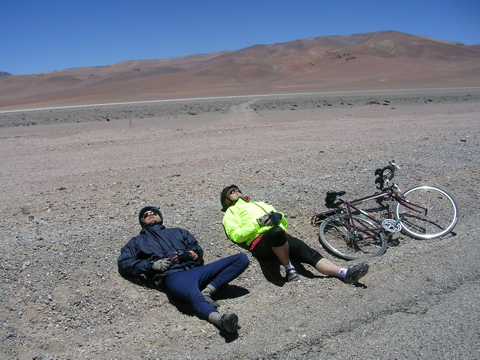
On the more shallow parts of the descent we were in our granny gears, pedaling as hard as we could, to go maybe 6 mph. We should have been going 30 or 40, but the wind just stopped us. We pulled over and laid down in the rocks, hoping that Eduardo and Steve would come back and save us.
They did, and we took another 23-mile drive across a high barren area at around 14,000 feet. Here we passed within 6 km of the border with Bolivia. We had to eat lunch in the Fiat because it was too windy to set anything up outside. Then we reached an astonishing site… unlimited downhill.
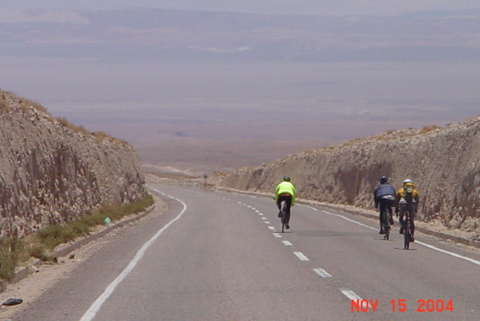
We all got out, got on and started the ride down. Poor road conditions coupled with the volatile and strong wind kept us vibrating and braking all the way down. It took us 1-1/2 hours to ride 40k/25m down hill – twice the time we would have expected. Dalton gets the award for fastest downhiller. One of my tires turned wobbly (went out of true) on the way down.
At the bottom, 7,000 feet lower than we were just a bit ago it was hot. We came to the Chilean customs station, where we took off layers, were disinfected, had to fill out forms, got all our stuff inspected, and lost some of our goods. The border guards took our meat, cheese, Steve’s honey and some other stuff).
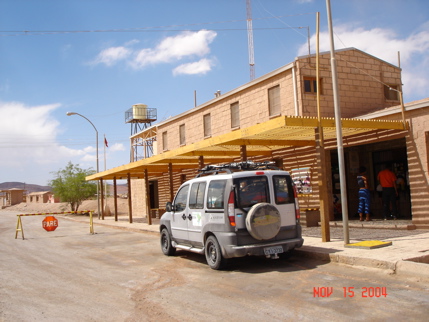
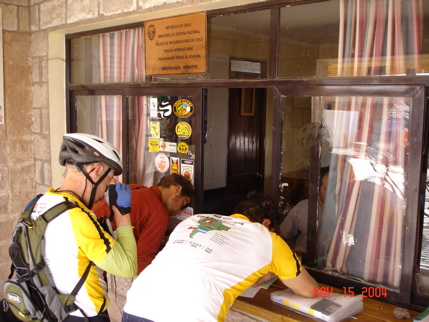
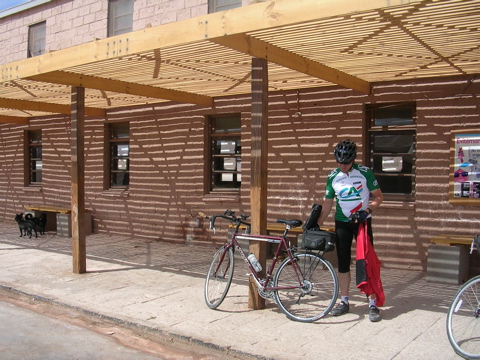
We’re officially in Chile now.
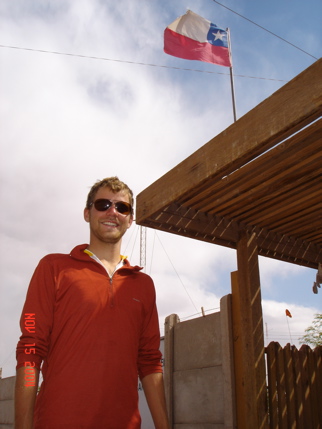
After this 1-1/2 hour customs hassle we rode into town.
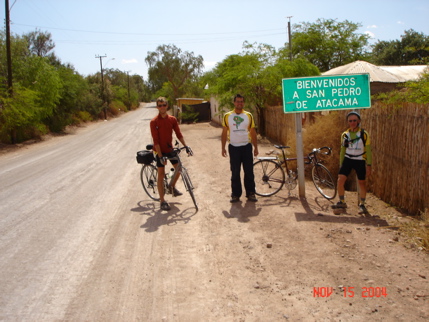
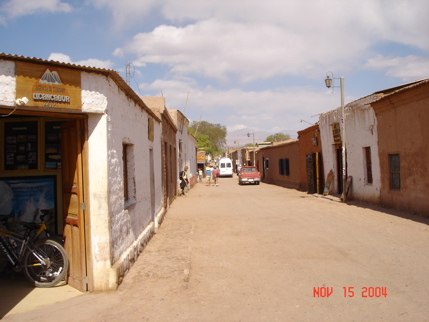
San Pedro de Atacama is really a cool place – one of the great treasures of Chile. The Atacama itself is a vast area that ranges from Peru to halfway down Chile. It is the driest place in the world. In San Pedro they way it rained in 1971 for the first time in 400 years, and hasn’t rained since. The dryness has led to excellent preservation of some pre-historic cultures that were just discovered less than 50 years ago (Tulor Village is 6km south of San Pedro).
The town itself is all single story adobe buildings. All the roads are dirt, except for the paved “highway” that goes through town. The allure of the archeological artifacts and the beauty of the Atacama and the Andes has drawn a diverse, international tourist crowd to San Pedro. The place is exceptionally and unusually hip and cosmopolitan. I will return here.
We found a decent hotel and ate a roofless restaurant in town lit mostly by candles and bonfires. Our team huddled under a tarp by a wall to get out of the cold. It was a magnificent day and dinner.
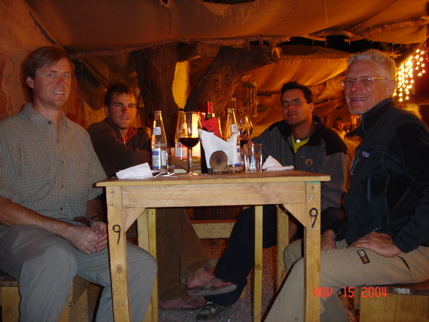

 November 15, 2004
November 15, 2004 